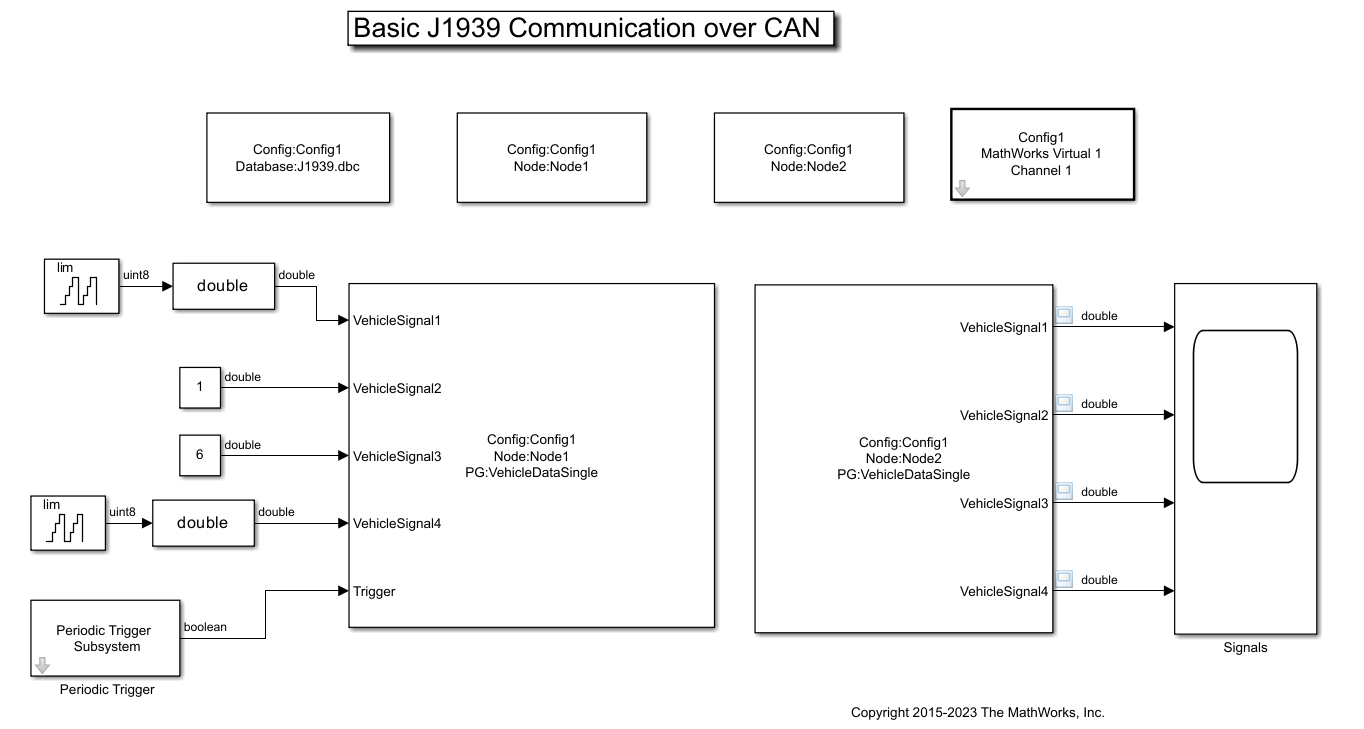J1939 Node Configuration
Configure J1939 node with address and network management attributes
Libraries:
Simulink Real-Time /
J1939 Communication
Vehicle Network Toolbox /
J1939 Communication
Description
The J1939 Node Configuration block is where you define a node and associate it with a specific network configuration. Its Message information is read from the database for that configuration, unless you are creating and configuring a custom node.
To use this block, you must have a license for both Vehicle Network Toolbox™ and Simulink® software.
The J1939 communication blocks support the use of Simulink accelerator and rapid accelerator modes. You can speed up the execution of Simulink models by using these modes. For more information on these modes, see Acceleration (Simulink).
The J1939 communication blocks also support code generation that have limited deployment capabilities. Code generation requires a C++ compiler that is compatible with the code generation target. For the current list of supported compilers, see Supported and Compatible Compilers.
Examples
Ports
Output
Parameters
Version History
Introduced in R2015b


